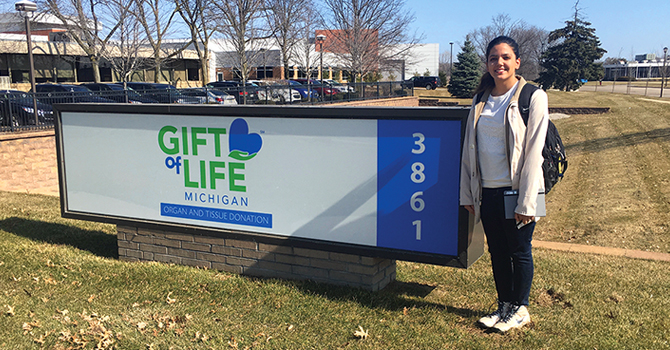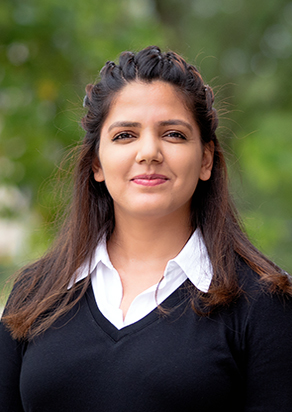Organ Donation: Hesitations and Encouragements

Kashvi Gupta
Master’s Student in Global Health Epidemiology
This is the second article of a 2-part series. Read part 1, Organ Donation: Public Awareness and Popular Media.
While 95 percent of Americans support organ donation (organdonor.gov), only 56 percent of Americans are registered as organ donors (Donate Life America, April 2018 Report). Why such a large gap?
Multiple initiatives have sought to address the most common obstacles and hesitations.
- Lack of time to understand the implications of being an organ donor
- Missed opportunity to register as an organ donor at the DMV
- Confusion about the relationship between the DMV and organ donation
- Fear of being treated differently in the emergency department due to organ donor status
- Concerns that faith communities forbid organ donation
Organ donation awareness campaigns are common in local communities, universities, and hospitals and provide information resources, inspirational stories, and registration services tied directly to the national organ donor registry. But with the rapid decline in American teens getting a driver's license (47 percent decline since 1983), public awareness of online platforms for registering as an organ donor is increasingly crucial. Can we establish other normative points of contact where every citizen is invited to register as an organ donor online, for example while filling out admission forms for various stages of education or signing up for health insurance?
It is miraculous that a patient so close to death can come back from a terminal prognosis to lead a healthy life for years, often decades.
Just as importantly, we have to continue sharing stories of the impact organ donation has had on patients, their families, and their communities. And these stories need to be accompanied by data that addresses the other obstacles on the above list.
For those fearful of being treated differently in the emergency department due to organ donor status, we can remind them of the many regulations medical staff must follow to ensure every patient receives excellent medical care. This includes informing doctors of donor status only when a patient's death is imminent and unavoidable. Perhaps just as importantly, we can do better at communicating that a physician's first and only goal in any situation is to provide the best treatment possible for the patient at hand. (An important side note here is that not all organ donation begins with a donor's death. Living kidney donors, for example, lead healthy lives for decades after donating, and should they ever have problems with their own kidney, they are moved to the top of the waitlist.)
Personal convictions about the ethical and religious aspects of organ donation are complicated. At the moment, none of the major religious traditions have issued public statements against organ donation.
It is miraculous, even to many doctors (including your author), that a patient so close to death can come back from a terminal prognosis to lead a healthy life for years, often decades. With the technology that makes transplant surgeries so successful today, more work must be done in educating the public about the life-saving aspects of organ donation. To that end, I will share a personal reflection about my experience with death, life, and an organ donation.
To Share Life
Two years ago, I was a medical student in the cardiothoracic surgery department at Henry Ford Hospital in Detroit. I was working with a nurse to remove a young man's temporary pacemaker wires. As she started to remove the lines, I asked him if he felt any pain. He did not respond. His eyes remained glued to an iPhone screen, and I could hear the sounds of a basketball game, squeaky sneakers on a gym floor. I asked if he was watching highlights from an old game. He lifted his eyes long enough to say no, his wife was live streaming his ten-year-old daughter's basketball game from camp. We had to request several times that he keep his phone away from his body because it could interfere with his pacemaker. But he was determined to watch the game, so he sat in an awkward position, holding the screen away from where we worked. I then noticed a card on the windowsill—"Dear Papa, the best gift this year was you getting a heart."
Transplant surgeries give patients and their families another chance at life.
In that moment, I understood something new about heart transplants. My initial dilemma—that transplant surgeries only extend illness and chronic disease—was resolved. Transplant surgeries give patients and their families another chance at life. My patients would wake up the morning after the transplant with eyes full of hope, determined to make every beat of their new heart count. For them each moment, however big or small, is precious. Each time I have interacted with a transplant patient and their family, I have gained new insights into this incredible gift of life.
There are countless stories on social media sharing how transplants have changed not only recipient but donor families in positive ways. I encourage you to read some of them. If you talk to families that have lost a loved one who then became a donor, you won't hear about how the organ was "harvested" (the preferred term is recovered) or how their family member was moved along quickly toward death in order to serve someone else's needs (because that is not what happens). Instead, you'll hear story after story about how the organ donation was the one thing that gave them hope after their loss, how their loved one's decision to donate and the knowledge that it happened was an unexpected gift to them in their time of deepest suffering.
I urge you to be curious and to seek answers about organ donation. If you are willing, I encourage you to take a minute to register online as an organ donor. In more ways than one, your decision to donate could be life giving.
We are unable to sustain the conversation around organ donation in such a way that donor numbers are anywhere close to keeping up with the steadily increasing demand for organs.
You can register to be an organ donor with Donate Life America. Smart-phone users can access the link through various apps. Inform loved ones about your decision to be an organ donor so that they can follow your wishes when the situation arises. For additional information about the transplant and donation processes, visit the Organ Procurement and Transplant Network website.
A Calculus Large and Small
We have improved surgical outcomes and worked through much of the ethical and social concerns. We have seen spikes in media references. But we are unable to sustain the conversation around organ donation in such a way that donor numbers are anywhere close to keeping up with the steadily increasing demand for organs.
It's difficult to calculate what kinds of increases in donor registrations would begin to solve the organ shortage crisis. Only 56 percent of Americans are registered organ donors, and only 3 in 1,000 people die in such a way that they can be a donor. Currently, more than 115,000 people in the US are waiting for an organ. Every day, 22 people die waiting for a transplant while 144 new potential recipients are added to the list (Donate Life America, April 2018 Report).
Those are big numbers. Perhaps a more meaningful number is a much smaller one: eight. Nearly every donor has the potential—with eight lifesaving organs (heart, two lungs, two kidneys, liver, pancreas, intestines)—to save eight lives. Tissue donations, like eyes and skin, can significantly improve quality of life for recipients.
Perhaps eight can be the most important number for you. It is for me.
This is the second article of a 2-part series. Read part 1, Organ Donation: Public Awareness and Popular Media.
About the Author
Dr. Kashvi Gupta graduated from medical school in India and is studying to become a cardiothoracic surgeon. She is pursuing an MPH in Global Health Epidemiology at Michigan Public Health and is a Gelman Global Scholar. This summer she worked as a research assistant at CIINT, a translational nutrition and health research institute based in San Jose, Costa Rica, studying the dietary patterns of a small population in the Guanacaste region. Her team's goal was to develop a diet score to show how nutrition affects the gut microbiome and may to be related to the development of colorectal cancer. Read more about Gupta's path to public health at We Are Michigan Public Health.

